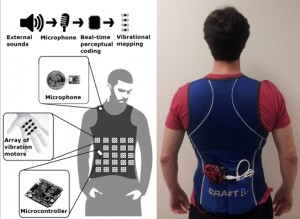During our conversation with Dr. David Eagleman, he discussed the three major focuses of his cognitive neuroscience laboratory which uses humans as its model. Eagleman believes that interactions with animal models should be taken with skepticism. Animal consciousness and perception remains elusive and therefore suggests that research on cognition should be completed in humans.
Time Perception
Eagleman is fascinated with time perception. After a near death experience in which time appeared to have immensely slowed down, Eagleman has been interested in temporal illusions in sequence and duration. His laboratory uses psycho physical tests to test signal processing and reaction time. Eagleman believes that understanding the time domain is imperative in understanding certain mental illnesses. For instance, he believes that schizophrenia may actually be a time domain deficit in which affected individuals have a lag between sensory processing and perception of time.
Synesthia
Eaglemans lab also studies patterns of synesthia in affected patients. His goal is to understand what facilitates the cross-blending of the senses. Furthermore, his goal is also to determine what is the right amount of cross talk. Diseases such as autism may result from too much cross talk as patients often complain of sensory perception issues.
Plasticity
Eagleman’s laboratory looks to manipulate the processes of neuroplasticity. A project in his laboratory looks at having the body subsitute sensory filters. He is currently creating a vest for deaf individuals or individuals with severe hearing impairment. This vest contains several vibration motors that are activated by microcontroller. The microcontroller is fed information through auditory input from a microphone. Through this mechanism, language can be translated into a series of vibrations. These series of vibrations are an alternative for understanding language through the auditory system.
Neuroscience & Law
Eagleman’s last endeavor is in the Initiative of Neuroscience & Law at BCM. The goal of this project is to create changes in the legal system. This includes changing rehabilitation treatment for drug addicts through neuroimaging techniques, the way violence and drug intervention programs are run within communities and the manner in which individuals are convicted of crimes. His goal is to drastically change current social policy, however, he states that the biggest challenge to this goal are judges who are opposed to making changes in the political system.

Leave a Reply